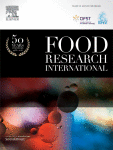A special issue of International Journal of Molecular Sciences (ISSN 1422-0067). This special issue entitled "Host-guest Complex" belongs to the section "Physical Chemistry and Chemical Physics". International Journal of Molecular Sciences is published by MPDI, and is indexed in Journal Citation Report with 3.687 in Multidisciplinar chemistry and Biochemistry & Molecular Biology categories. Since 2000 is an Open Access publication. In order to provide free access to readers, and to cover the costs of peer review, copyediting, typesetting, long-term archiving, and journal management, an article processing charge (APC)
Host–guest complexes, also known as inclusion complexes, are supramolecular structures composed of two or more molecules or ions that are maintained through noncovalent interactions.
In this Special Issue, we hope to address both the structural aspects of the formation and stability of these inclusion complexes as well as the energetic aspects associated with them, together with the different instrumental techniques used to characterize them, addressing the aspects related to molecular recognition and conformational switching. Of course, we must also take into account the aspects related to the technological applications of these compounds. In fact, they show important potentialities in topics such as superconductivity phenomena, the design of sensors, and food chemistry, agricultural chemistry, or their applications in matters of the environment.
Manuscripts should be submitted online at www.mdpi.com by registering and logging in to this website. Once you are registered, click here to go to the submission form. Manuscripts can be submitted until the deadline. All papers will be peer-reviewed. Accepted papers will be published continuously in the journal (as soon as accepted) and will be listed together on the special issue website. Research articles, review articles as well as short communications are invited. For planned papers, a title and short abstract (about 100 words) can be sent to the Editorial Office for announcement on this website.
Submitted manuscripts should not have been published previously, nor be under consideration for publication elsewhere (except conference proceedings papers). All manuscripts are thoroughly refereed through a single-blind peer-review process. A guide for authors and other relevant information for submission of manuscripts is available on the Instructions for Authors page. International Journal of Molecular Sciences is an international peer-reviewed open access bimonthly journal published by MDPI.
Please visit the Instructions for Authors page before submitting a manuscript. The Article Processing Charge (APC) for publication in this open access journal is 1800 CHF (Swiss Francs). Submitted papers should be well formatted and use good English. Authors may use MDPI's English editing service prior to publication or during author revisions.
Keywords
host-guest complexes conformation and structure
inclusion complexes formation and stability
cooperativity
sensing
cyclodextrins
calixarenes
cucurbiturils
porphyrins
crown ethers
zeolites
carcelands






























